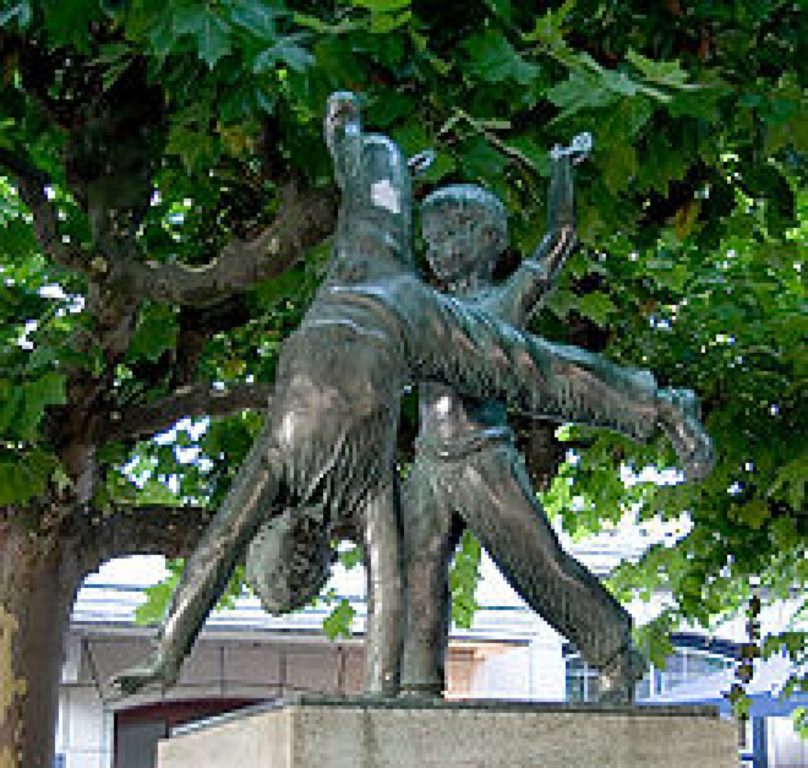Most drupa-goers will walk on past the Radschläger-Brunnen (Cartwheelers’ Fountain) in Düsseldorf’s Burgplatz without throwing it a second glance. What they are missing is a 700-year old symbol of the city. Legend has it that, after the Battle of Worringen in 1288, when Graf Adolf beat the forces of the Archbishop of Cologne and secured a town charter for Düsseldorf, the town’s children celebrated by turning cartwheels.
The open rivalry between Düsseldorf and neighbouring Cologne persists, though these days the debate is often confined to the debate as to which beer variety is better, Düsseldorf’s Altbier or Cologne’s Kölsch (I can answer this for you: Altbier, no contest).
Another (rather more far-fetched) story tells of a wedding procession in the 16th century. A broken cartwheel threatened to halt the procession, but a boy watching the calamity jumped in and held on to the wheel, allowing the procession to continue. The alternative (and perhaps more credible) version is that the unhappy bride-to-be of Johann Wilhelm I was observed in a state of prenuptial misery on route to her wedding. Children turning cartwheels next to the passing bridal carriage brought a smile to her face.
Apparently, when exhibitions started to attract commercial visitors to Düsseldorf in the 19th and early 20th century, the local urchins had an eye to the main chance and started turning cartwheels for cash: the traditional cry was ‘för eene Penning‘, local dialiect meaning ‘for one Pfennig‘. When I was very young, you might still spot a few children in the Altstadt keeping up the tradition for the price of a few ‘Groschen’, though their antics had become a little more creative, usually involving one-handed cartwheels while holding a full Altbier glass. (No doubt if you can find one now he’ll have a PayPal account.)
I’m reliably informed by the Düsseldorf web site that the Radschläger competition, which dates back to 1937, continues in the Altstadt each year in June. They have admitted girls since the 70’s (oh, the enlightenment), but I think I’ll pass this year.
Whichever legend holds sway, the Radschläger is a popular symbol for Düsseldorfers and can be found on everything from beer glasses to mugs, chocolates to door handles. And the little upside-down Radschläger has a few lessons for the printing community as it flocks to Düsseldorf this spring.
- Your closest rival is less than half an hour away. Be better.
- Whatever threatens to halt your progress, find a creative solution and move on.
- However gloomy things might seem, there’s always something to smile about.
- Give customers what they want and the money will follow.
- If you want better margins, be different.
- And when you want to move forward, look at things from a different angle.
„Radschläger wolle mer blieve, wie jeck et de Minschen och drieve“
